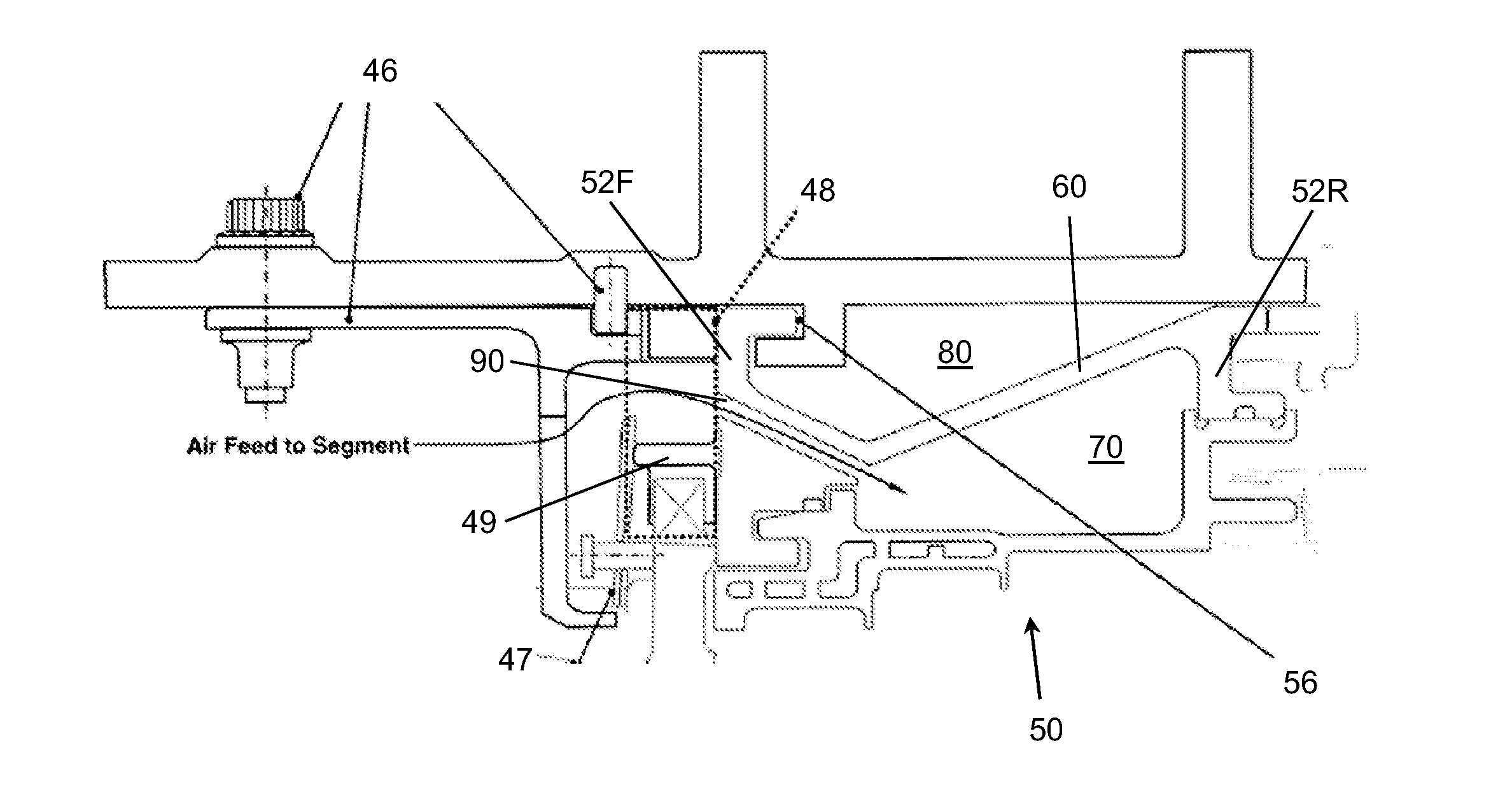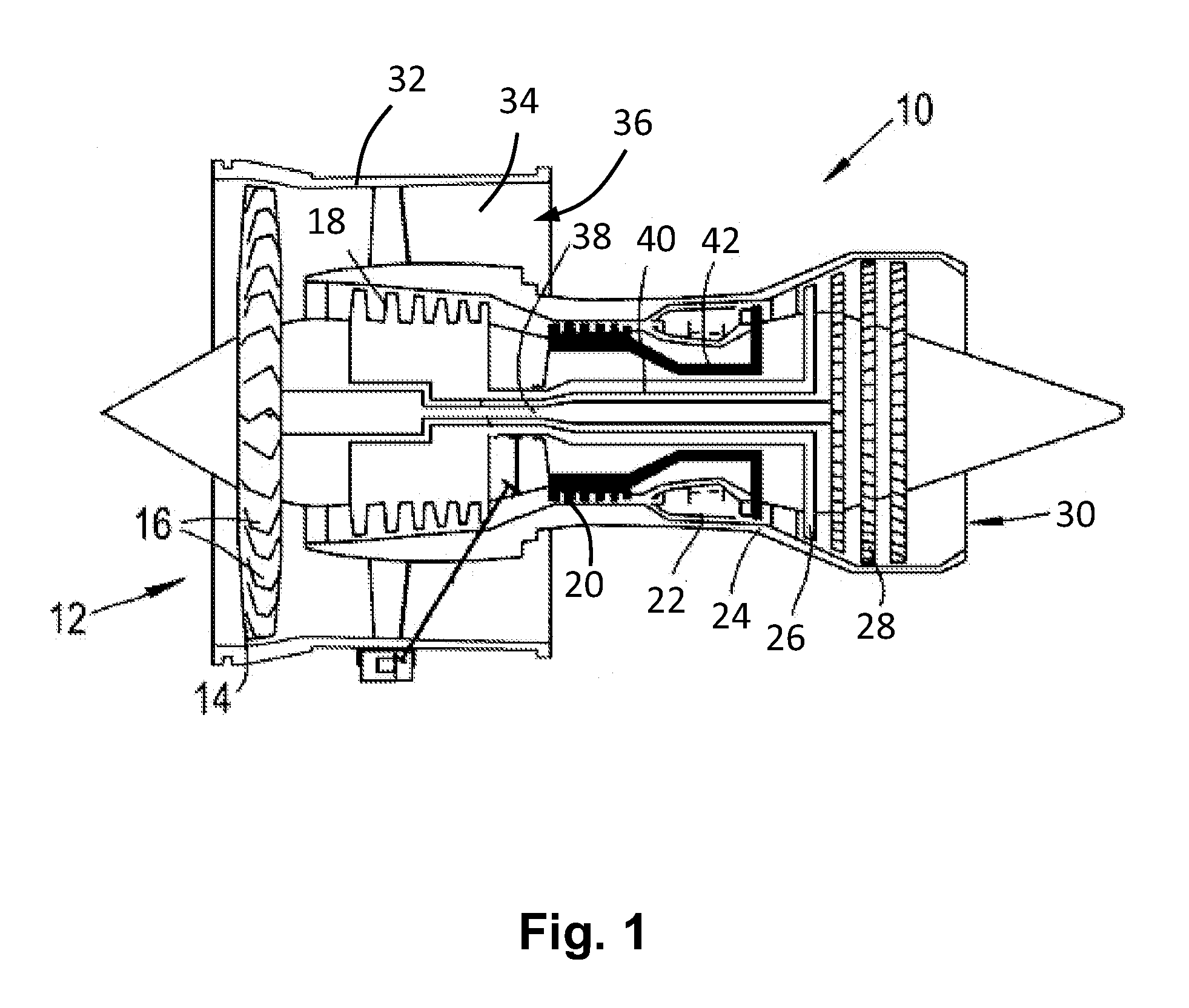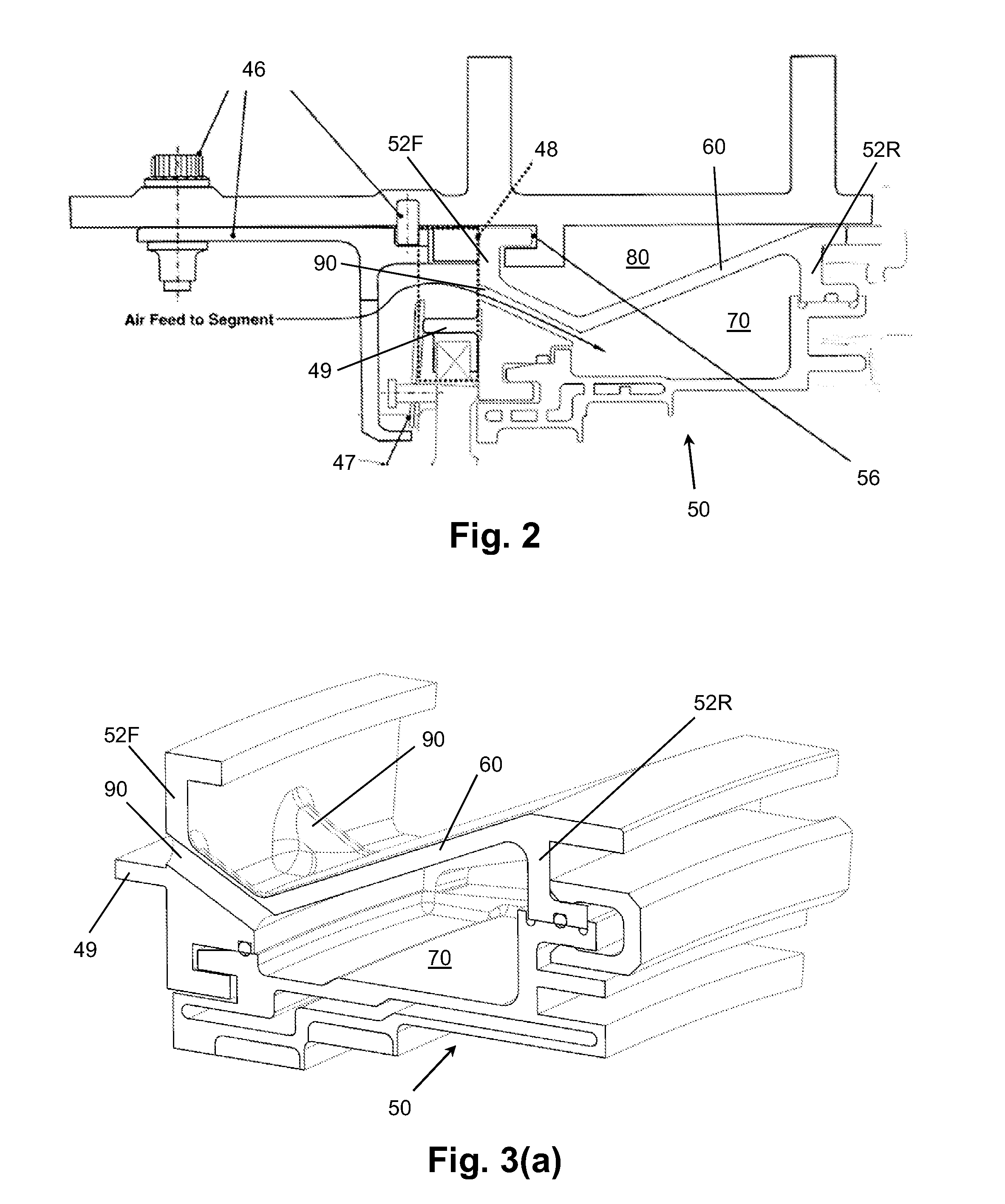Carriers for turbine components
a technology for gas turbine engines and carrier carriers, which is applied in the direction of machines/engines, stators, mechanical apparatus, etc., can solve the problems of difficult to meet the requirements of efficient cooling air delivery to the main radially inward cooling chamber, difficulty in providing a localised geometry or architecture that meets the conflicting requirements in an efficient manner, and difficulty in facilitating the provision. , the effect of simple shap
- Summary
- Abstract
- Description
- Claims
- Application Information
AI Technical Summary
Benefits of technology
Problems solved by technology
Method used
Image
Examples
Embodiment Construction
[0055]Referring firstly to FIG. 4 (FIGS. 1, 2, 3(a) and 3(b) having already been described in the context of the prior art), here there is shown a first embodiment of the invention, showing a single carrier segment 150 comprising front end wall or section 152F and rear end wall or section 152R. Extending longitudinally (relative to the engine axis) between the front and rear ends sections 152F, 152R is carrier wall 200F, 200R, which has an example of the characteristic new shape and / or configuration in accordance with this embodiment of the invention. The front end section 152R includes a flap plate rail or flange 149 for supporting and pinning to an NGV (not shown), which also forms part of the important sealing arrangement in this region of the engine for isolating the inboard hot section containing the NGVs, turbine blades, etc. from the outboard region containing the cooling air feed source.
[0056]The carrier wall 200F, 200R itself is of substantially uniform thickness, e.g. of a...
PUM
 Login to View More
Login to View More Abstract
Description
Claims
Application Information
 Login to View More
Login to View More - R&D
- Intellectual Property
- Life Sciences
- Materials
- Tech Scout
- Unparalleled Data Quality
- Higher Quality Content
- 60% Fewer Hallucinations
Browse by: Latest US Patents, China's latest patents, Technical Efficacy Thesaurus, Application Domain, Technology Topic, Popular Technical Reports.
© 2025 PatSnap. All rights reserved.Legal|Privacy policy|Modern Slavery Act Transparency Statement|Sitemap|About US| Contact US: help@patsnap.com



